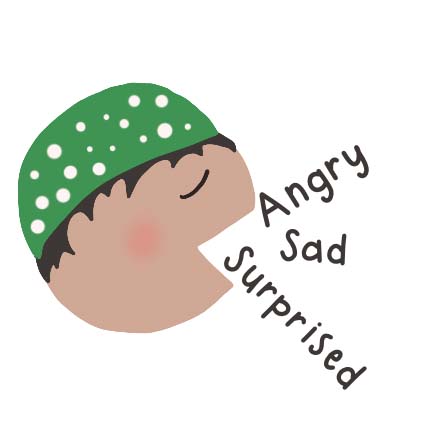4 Tips To Help Your Child Identity Their Emotional Triggers

Part of helping your child manage their emotions involves helping them to understand what triggers their emotions. An emotional trigger is often a thought that occurs in response to a situation. The thought is generally not a fact but rather an interpretation of the event that then causes an emotional response or reaction.
Event → Interpretation → Emotional Response
For older children and adults it is important to try and identify the thought that prompts the emotional reaction. This requires ongoing reflection and in certain cases professional help. However keeping a journal is an especially helpful way for teens and adults to begin to examine their thought processes.
Below are 4 tips to help you help your child become more aware of their emotional triggers.

Talk about feelings
Discussing and helping your child talk about their feelings is essential so that they build up an emotional vocabulary and awareness of the different emotions. Ask them questions such as what makes them feel sad/angry/excited etc? This helps them identify their emotional triggers and communicate how they are feeling which provides a solid base from which to teach them skills to manage their feelings. For a more in-depth look at identifying emotions please see the article ‘How to help your child identify their emotions’.

Make Observations
Make verbal observations when you notice your child’s emotional response to a situation e.g. I’ve noticed that when your brother received a gift you looked upset and then became angry; I’ve noticed when you have an argument with your friend you look sad, stay in your room and won’t talk … Young children in particular lack the self awareness to identify what may be causing them to feel a certain way. By making such observations it helps your child become aware of their triggers and links between emotions and their behaviour. From this you can discuss healthier ways to respond to their feelings.

Body Sensations
Emotions are accompanied by physical sensations such as increased heartbeat, muscle tension, shaking etc. Ask your child how they feel in their body when they feel angry/sad/ashamed etc. A useful exercise is to ask your child to draw themselves on a piece of paper (an outline is sufficient or if you have a large enough piece of paper e.g. wallpaper then get your child to lie down and draw around them) and to then use colours to mark on their body where they feel certain emotions. Devise a colour code with your child e.g. red for anger, and then they can colour in where they feel anger in their body. Work on one emotion at a time. It is often easier to notice the body sensation associated with an emotion e.g. racing heart, sweaty palms, rather than a thought and to therefore be more aware in the moment what may have triggered the emotional reaction.

Investigate
Remember that it is the way a person interprets the situation that causes their emotional response not the objective situation itself. Children perceive things very differently to adults so it is important to investigate by asking your child questions such as I’m interested to know why you threw your shoes at your brother? I’m wondering what was going through your mind when you wrote your sister’s name on the wall? When you didn’t come home on time what did you hope would happen?
For example:
Event: Your son throws a shoe as his sister (parent may assume they are fighting)
Parent: I’m interested to know why you threw shoe at sister?
Child: It’s a game we made up – the first one to hit the other 3 times with a shoe is the winner!
Parent: Ah I see ….. doesn’t it hurt? Is there another game you can make up? 😯
Not all children will be able …or want ….to answer such questions but try and find a way to help them communicate …. E.g. can you draw a picture of what happened…… This form of questioning can help elicit valuable insights in helping you and your child decipher their emotional triggers.
